As the cannabis industry continues to develop, consumers are presented with a constantly evolving array of products, each offering unique experiences and benefits. From traditional flower to innovative extracts and edibles, the diversity of cannabis products can be both exciting and overwhelming. In this post, we’ll explore the various formats of cannabis products available in the regulated market along with their uses and effects.
Fresh Cannabis Clones
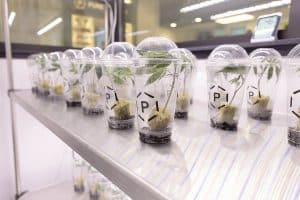 While not easy to come across you can purchase Cannabis plant clones much like you might purchase starter plants for your vegetable garden. Growing your own cannabis is a great way to get a true understanding of the plants complexity. Clones will come packaged in a clear plastic to go cup with a domed lid (looks like a slurpee cup) and can be planted directly into the pots you intend to use for the long term. For more information on growing your own you can either turn to a guide like Grow Your Own by Graf, Sherman, Stein and Crane, you can work from an online resource like Grow Easy Weed or you can check in with your local hydronics equipment supplier as they tend to be quite knowledgable. One of our neighbourhood favourites is Johns Plant Factory.
While not easy to come across you can purchase Cannabis plant clones much like you might purchase starter plants for your vegetable garden. Growing your own cannabis is a great way to get a true understanding of the plants complexity. Clones will come packaged in a clear plastic to go cup with a domed lid (looks like a slurpee cup) and can be planted directly into the pots you intend to use for the long term. For more information on growing your own you can either turn to a guide like Grow Your Own by Graf, Sherman, Stein and Crane, you can work from an online resource like Grow Easy Weed or you can check in with your local hydronics equipment supplier as they tend to be quite knowledgable. One of our neighbourhood favourites is Johns Plant Factory.
Dried Cannabis Flower:
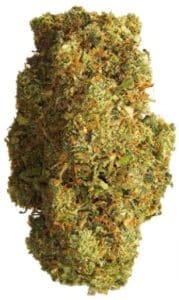 Cannabis flower, also known as bud or weed, is the most recognizable form of cannabis. It consists of the dried and cured buds of the female cannabis plant and contains the highest concentration of non-activated cannabinoids and terpenes. Flower can be smoked, vaporized, or used to make edibles and extracts. Different varieties offer varying effects, from uplifting and energizing to relaxing and sedating. The common vernacular for these varieties is Sativa generally suggesting energizing and Indica suggesting sedative. That said the truth of the matter is that these terms are not based in scientific reason whereas Equatorial and Afghanic better describe the origins of the genetics. Equatorial generally tend to be energizing and Afghanics less so. Cannabis flower is the fastest acting and shortest living modality. One of our favourites is the 1964 Blue Dream
Cannabis flower, also known as bud or weed, is the most recognizable form of cannabis. It consists of the dried and cured buds of the female cannabis plant and contains the highest concentration of non-activated cannabinoids and terpenes. Flower can be smoked, vaporized, or used to make edibles and extracts. Different varieties offer varying effects, from uplifting and energizing to relaxing and sedating. The common vernacular for these varieties is Sativa generally suggesting energizing and Indica suggesting sedative. That said the truth of the matter is that these terms are not based in scientific reason whereas Equatorial and Afghanic better describe the origins of the genetics. Equatorial generally tend to be energizing and Afghanics less so. Cannabis flower is the fastest acting and shortest living modality. One of our favourites is the 1964 Blue Dream
Cannabis Concentrates:
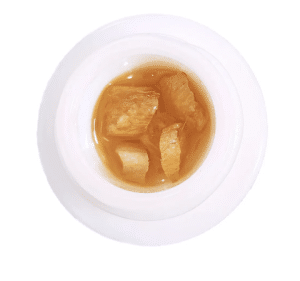
Concentrates are potent extracts derived from cannabis flower, containing high levels of cannabinoids such as THC or CBD. Common types of concentrates include:
-
- Hash: The original cannabis concentrate made by compressing resinous trichomes. Solventless. A popular example of Hash is the Vortex Afghan Hash.
- Rosin: Produced by applying heat and pressure to cannabis flower. Solventless
- Wax: A sticky, crumbly concentrate with a high THC content, popular for dabbing. Wax is produced by using a solvent typically butane.
- Shatter: A translucent concentrate with a glass-like texture, prized for its potency is also produced using a solvent such as butane. See an example here
- Diamonds: An extraction that produces crystal like “diamonds” often using a CO2 extraction method. A lovely example of diamonds is the High Fidelity Diamonds.
- RSO commonly aka Rick Simpson Oil is named after Rick Simpson who developed a controversial Cancer fighting protocol using concentrated cannabis oil most often extracted using alcohol and heat.
Concentrates can be smoked, vaporized, dabbed or ingested offering intense effects and rapid onset. They can also be used for producing topical products such as massage oil and facial serums. It is important to note that topical application will not produce euphoric results (won’t get you high).
Cannabis Edibles:
- Edibles are food and beverage products infused with cannabis extracts, offering a discreet and convenient way to consume cannabis. From gummies and chocolates to beverages and baked goods, the options are virtually limitless. Edibles provide a longer-lasting and more potent experience compared to smoking or vaping, as cannabinoids are metabolized by the liver before entering the bloodstream. Edibles can be very challenging to navigate in terms of serving size so the “go low and slow” mantra is particularly important with edibles because the effects can last quite a while. A staff favourite is the not too sweet and very yummy TreatsandTreats Oatmeal S’Mores Cups.
Cannabis Tinctures and Oils:
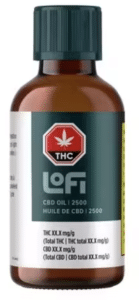
Tinctures and oils are liquid infused with cannabis using alcohol, glycerin, or oil-based carriers such as coconut or olive oil. They are typically administered sublingually (under the tongue) for fast absorption or added to food and beverages. Tinctures and oils offer precise dosing and customizable effects, making them popular among medical cannabis patients and recreational users alike. Like edibles these can offer long lasting effects. Unlike edibles they are easier to control serving size as one is often using a dropper or a teaspoon to serve from.
A potent CBD oil we recommend is the Lofi 2500. It is alcohol extracted and offers broad spectrum CBD.
Topicals:
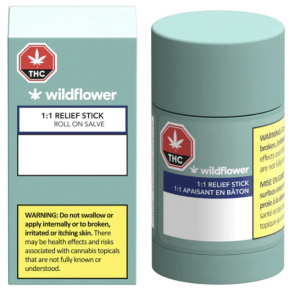 Cannabis-infused topicals are skincare products designed to be applied directly to the skin, potentially offering localized relief from pain, inflammation, and other dermatological conditions. Common types of topicals include lotions, balms, salves. Pre regulation we had examples of transdermal patches but we’ve. yet to see them on the regulated side yet. Unlike other forms of cannabis consumption, topicals do not produce psychoactive effects, making them suitable for use any time of day or night. Topicals might be in a small tub or in a convenient stick format like the 1:1 CBD:THC Wildflower Relief Stick.
Cannabis-infused topicals are skincare products designed to be applied directly to the skin, potentially offering localized relief from pain, inflammation, and other dermatological conditions. Common types of topicals include lotions, balms, salves. Pre regulation we had examples of transdermal patches but we’ve. yet to see them on the regulated side yet. Unlike other forms of cannabis consumption, topicals do not produce psychoactive effects, making them suitable for use any time of day or night. Topicals might be in a small tub or in a convenient stick format like the 1:1 CBD:THC Wildflower Relief Stick.
With all of this selection there’s bound to be a cannabis product to suit your needs and preferences. From the classic ritual of smoking flower to the convenience of edibles and topicals, the world of cannabis offers something for everyone. By understanding the different types of cannabis products and their uses, consumers can make informed choices and enhance their cannabis experience.
